Wuyishan is one of the most famous tea growing regions in the world; a special microclimate of rocky volcanic soil and a tremendous biodiversity protected from development by the Wuyishan Ecological Preserve.
The very first black teas in the world came from Wuyishan and inspired a worldwide love of tea that shaped history through war, trade and innovation. Hundreds of years ago, Wuyishan actually produced green teas, and traded these with European merchants. Black tea is rumoured to have been invented by accident when soldiers from Jiangxi marched through Wuyishan and piled fresh tea leaves as beds for the evening. The thick piles of tea could not dry in time to prevent full oxidation, and the result was a rich dark brew from the tea that farmers could salvage. Traders loved this dark black tea since it stood up to shipping across the world much better.
Over the years, the craft of black tea in Wuyishan has been refined to the point where the Chinese domestic market is falling in love with teas like Jin Jun Mei and Zheng Shan Xiao Zhong. The result is a huge variety of black teas from the same region, all with unique and worthwhile flavors, textures, and aromas to explore.
If you are ready to taste the black tea that inspired plantations from Kenya to Ceylon, it is helpful to know what makes a Wuyi Black tea, and how to pick out a selection for yourself.
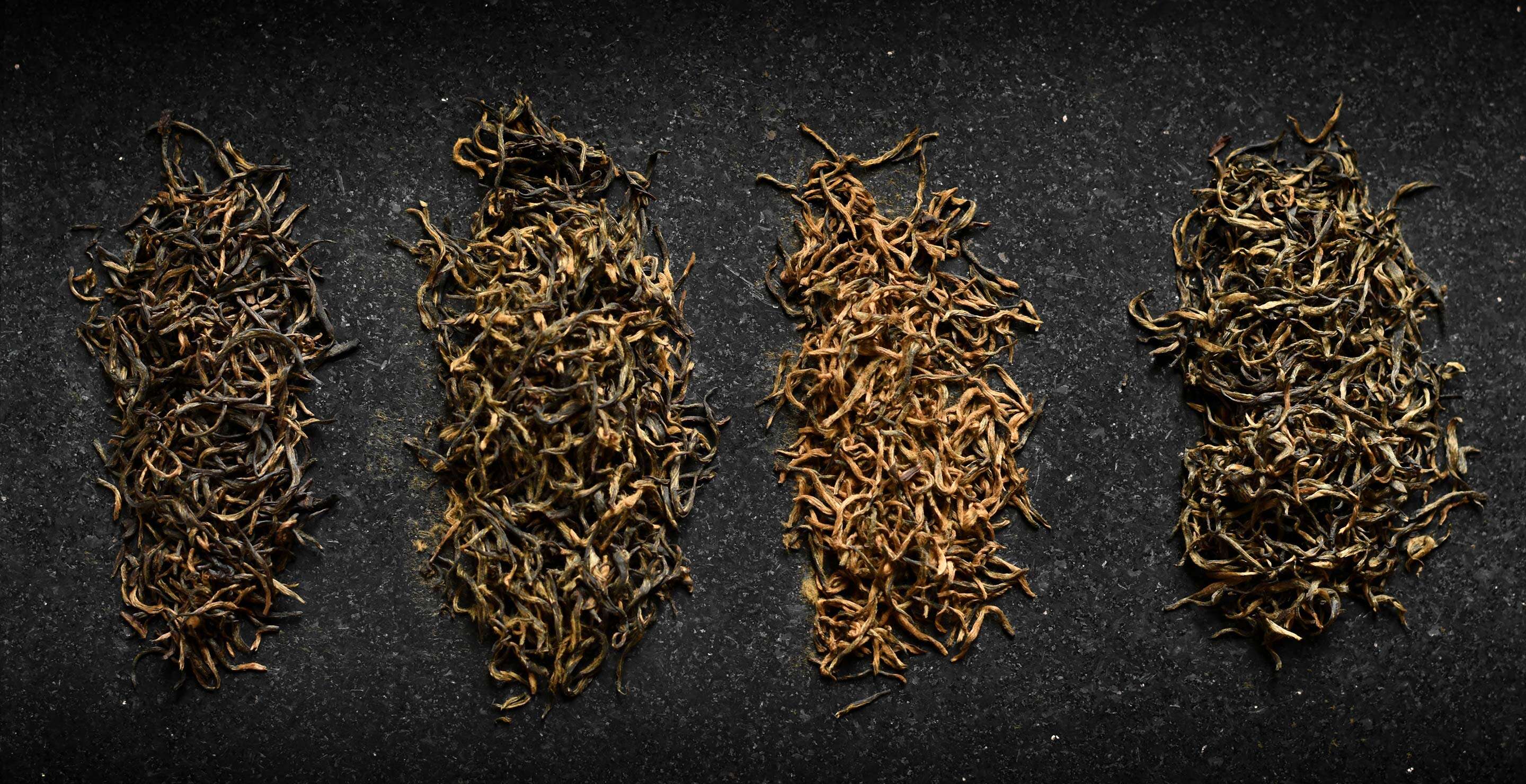
First: what makes a black tea?
Black tea is not defined by cultivar or species. Indeed, black tea can be picked and finished from any tea plant in the world. Instead, black tea is defined strictly by the processing techniques used.
In Wuyishan, black tea traditionally is piled thick in bamboo baskets and allowed to wilt in the sun. The thick piles and deliberately long wilting time allow the tea to fully oxidize before it is heat-treated. Oxidation before heat is what defines black tea.
Our partner, the Li Family in the Wuyishan Ecological Preserve, still uses the oldest and earliest black tea making techniques with slow oxidation. Larger factories employ oxidizing machines that use heat and airflow to speed up the process. The Li Family prefers the depth and complexity imparted by exposure to the sun and slow finishing.
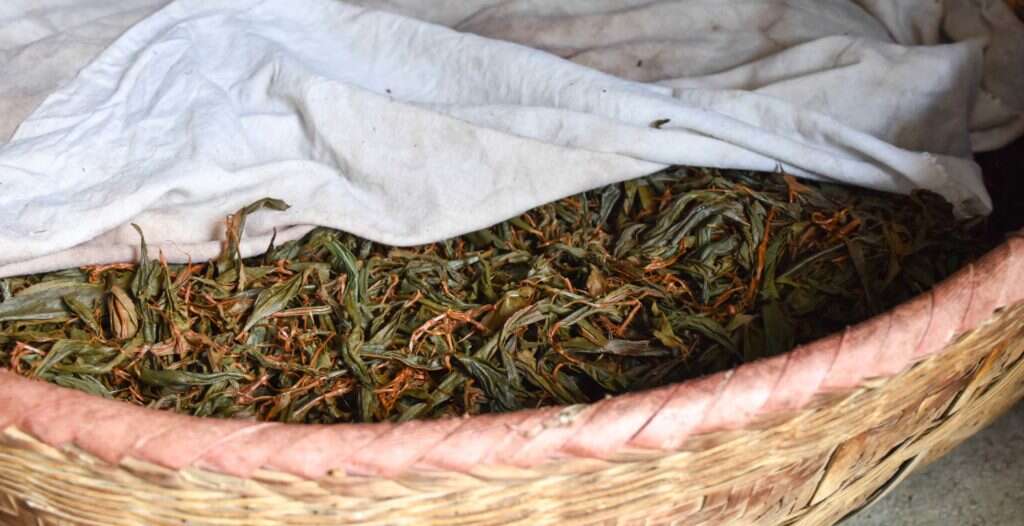
Where should Wuyi Black Tea be from?
If you are thinking of starting off your exploration of Wuyi black teas, there are several different considerations to narrow down your choices, but the most important piece to establish first is that you are actually getting black tea picked from within the Wuyishan Ecological Preserve.
Rocky volcanic soil, well-preserved biodiversity, sweet mountain spring water, bamboo forests, and high mountain slopes all make the Wuyi Ecological Preserve a truly unique region. The importance of this region has been recognized by the local government, which has limited development within the park boundaries, only allowing tea planted before the recent 2008 environmental protection laws were put into place. This means that there are no huge factory farms or clear-cut mountainsides. Instead the region is dotted with terraced tea slopes managed by individuals and families with scattered forests, rocky streams and undeveloped land.



At the end of the day, all Wuyi black tea is a meditation on the rocky mineral-forward texture that only the conditions of the Wuyishan Ecological Preserve can provide. Tea grown in clay-rich lowland soil in further out regions may be aromatic, but it lacks the staying power over multiple steepings and the rich mouth-filling texture that defines Wuyi Black Tea.
How do you know that you are getting the real deal?
Look for an origin statement that lists either the Ecological Preserve as a whole or a specific village within the preserve like Tongmu, and check for photos, video, and specific descriptions of provenance including workshop or family info that back up any origin statement.
For example, the Li Family’s family home is in the Tongmu preserve, a controlled and highly-protected region within Wuyishan’s protected region. Tongmu benefits from mountainsides, ample forest cover, and soil that is almost all rock. The family workshop is attached to their home in Tongmu where they finish their black teas by hand using traditional slow sun-oxidation methods, hand twisting and curling, and for some teas, pine wood smoking.

Once you know that you have found hand-picked and traditionally-finished black tea from within the Wuyi Ecological Preserve, there are several different factors that will influence the flavor and texture of your brew in interesting ways.
The varietal of tea, whether bud or leaf is used, tree age, whether or not the tea is smoked, and whether the tea is wild or cultivated all have an impact.
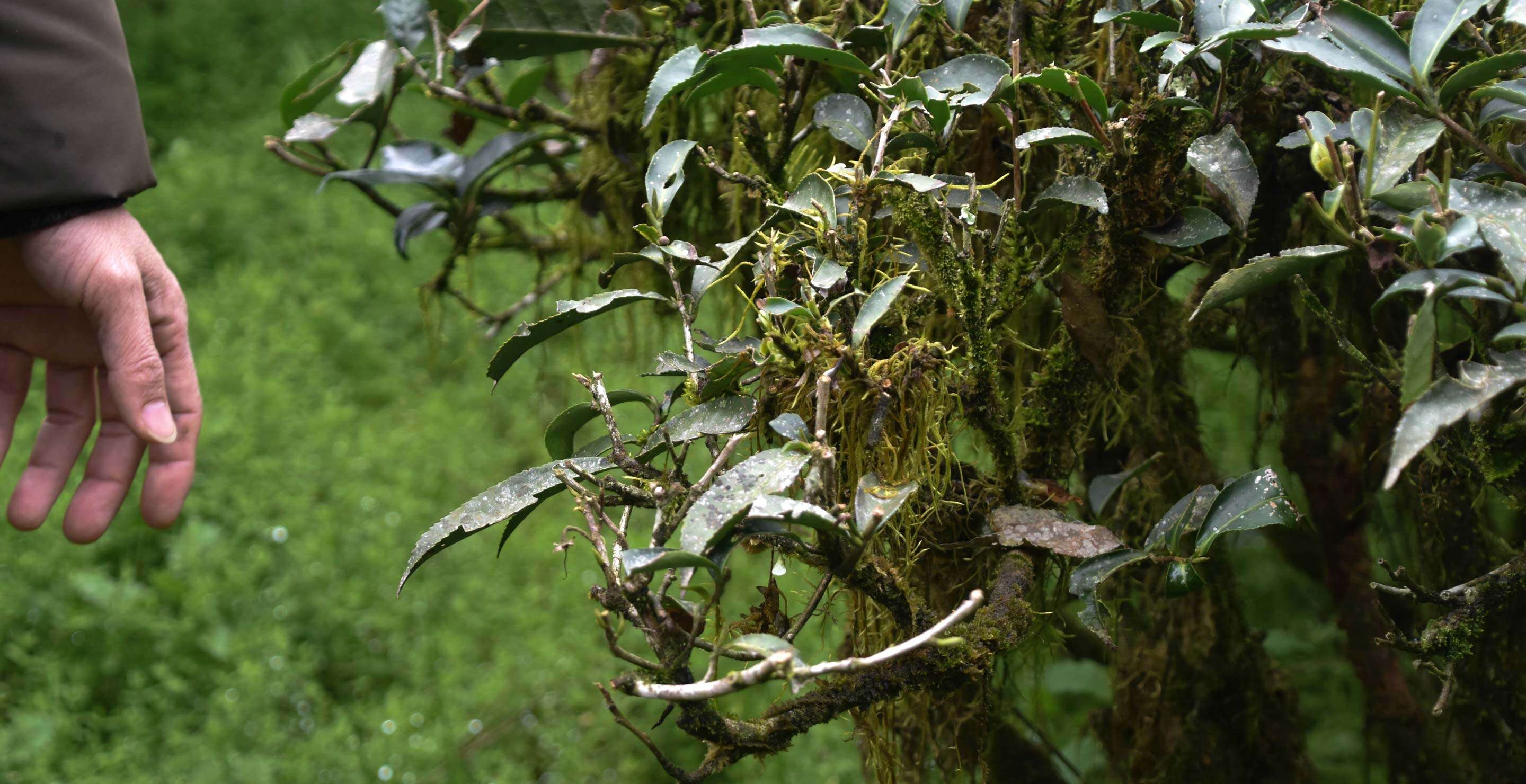
Cultivar
The oldest black tea in the Wuyi Ecological Preserve is Xingcun Xiaozhong. Within the preserve, this varietal is generally propagated from seed, not from cuttings or grafting, so there is an opportunity for genetic diversity, and therefore variety of flavor and texture from plant to plant. The Xingcun Xiaozhong varietal gives the clearest perspective on the rocky mineral-forward texture of the region.
The Xingcun Xiaozhong buds are used to make Jin Jun Mei, while leaves are used for Zheng Shan Xiao Zhong.
In contemporary times, other varietals have begun to be picked and finished as black tea including Mei Zhan, Jin Guanyin, and Feizi Xiao. These are much more aroma-forward teas with specific and evocative fruity undertones. Mei Zhan in particular is well-loved by Li Xiangxi’s older brother for its more floral aromas, and the cultivar’s distinctively large leaves are easy to spot.
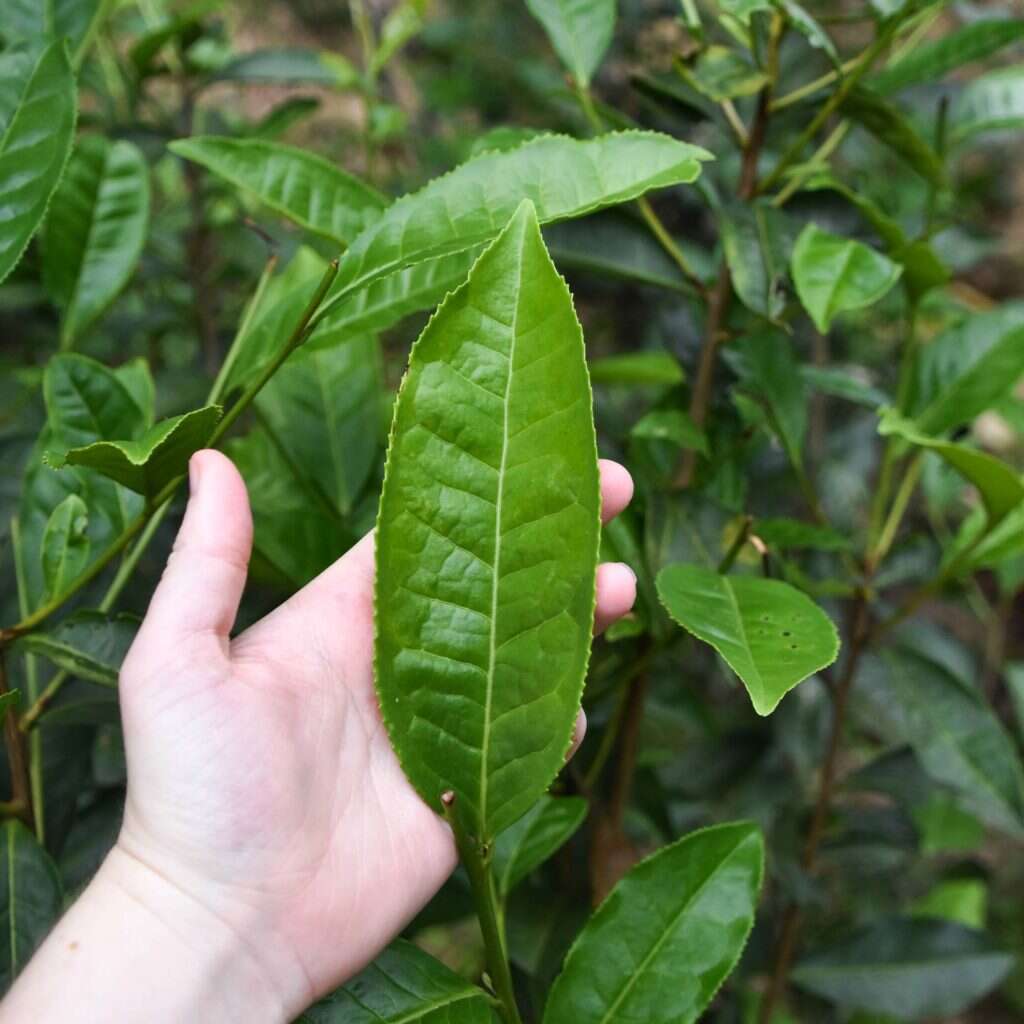
Wild or cultivated?
Within Xingcun Xiaozhong varietal, there are plants that are cared for in terraced slopes – trimmed yearly to encourage tender buds – and there are wild tea plants growing between bamboo groves and evergreens in the hills of Tongmu. The wild tea plants have a much lower yield and more varied buds in size and color, but make for sweeter and more complex tea.
Wild Tongmu black teas are some of the rarest teas to find, as the demand in China is so high. Our partner Li Xiangxi makes a small portion of her family’s yearly picking available to illustrate the unique flavor profile of Tongmu
Bud or Leaf
As you develop taste preferences for black tea, the amount of bud versus leaf is going to be one of the biggest influencing factors on taste and texture. Jin Jun Mei is made entirely out of buds. The down on each little bud actually suspends in the brewed tea giving Jin Jun Mei an incredibly thick feeling. The buds are full of sugars stored up for growth, so they are extremely sweet and rich. While classic Jin Jun Mei is sweet and thick, it is much lighter in flavor and texture, often yielding sweet potato aromas.
Teas with more leaf like Zheng Shan Xiao Zhong and Wuyi Gongfu Black are picked from delicate young spring leaves that have had more time to interact with the sun and develop polyphenols, the plants’ natural defense against insects. These polyphenols are responsible for much of the flavor in tea, making leaf-based teas much more flavorful and often more aromatic. Wuyi black teas made from leaves tend to have rich grape undertones and other foresty complexity.
Teas made from buds do tend to be more expensive, but this is because it takes more work to pick enough buds to make the same amount of tea. The extra cost covers the labor involved, but is not a reflection that one is ‘better’ and one is ‘worse.’ Both Wuyi Gongfu Black and Jin Jun Mei each offer unique perspectives on the Wuyi terroir.
Smoked or unsmoked
Smoked Zheng Shan Xiao Zhong, commonly known in the west as Lapsang Souchong, was another accidental discovery when a farmers’ traditional pinewood workshop was burned down by passing soldiers. The farmer worked to salvage the tea inside, the product of their whole spring’s labor, and found that the tea had absorbed a rich intense smoke. They sold the harvest to the Dutch, who came back the next year demanding huge quantities of the smoky tea, which had become an overnight sensation.
Our partner Li Xiangxi’s cousin manages the family’s local pine wood collection and selects and dries each batch of wood to minimize actual smoke and maximize the release of oils and resins. If you find yourself falling for smoked teas, it is always best to find small batch workshops like the Li Family. In larger workshops, wood is often added wet to produce the most smoke possible instead of the most resin and oil. This yields ash-forward, low quality tea whose smokey flavor wears out after a few steepings. Even worse, many large export-focused productions will skip smoking entirely, and instead opt to flavor their smokey black teas with smoke-flavored oils and flavorings.

Leaf-Harvest Wuyi Black Teas
Wuyi Gongfu Black
This is the classic and iconic black tea of Wuyishan – the closest it gets in craft to the very oldest black teas in the world. Wuyi Gongfu Black is twisted to form beautiful long leaves whose elegance is suited to formal tea ceremony, especially as they unfurl in the gaiwan. This is one of the smoothest leaf-based Wuyi black teas out there, perfect if you like big chocolate and cinnamon notes and a softer, more subtle texture accented by notes of honey. If you’ve never had Wuyi Black tea before, but have enjoyed black tea from other regions like Qimen Black, or even Assam, this is a the perfect introduction to what makes Wuyishan special.

Old Tree Wuyi Gongfu Black
The Li Family cares for a grove of semi-wild trees over one hundred years old. These trees have a distinctive moss that hangs from the branches, and the crisp vegetal aroma of the moss absorbs into the tea leaves over time. This adds a deeper textural complexity to the tea, a foresty undertone that adds immense dimension to the honey and chocolate notes of a classic Wuyi Gongfu Black.
In addition to the woody forest flavors of the moss, the tree age means deeper roots and bigger leaves. The deep roots draw in more sweet minerality from the volcanic soil. Overall, Old Tree Wuyi Gongfu Black is for anyone looking for the comforting deep flavors of a black tea but the textural complexity of an oolong or sheng pu’er.


Zheng Shan Xiao Zhong
Smoked Zheng Shan Xiao Zhong, commonly known in the west as Lapsang Souchong, was an accidental discovery when a farmer’s traditional pinewood workshop was burned down by passing soldiers. The farmer worked to salvage the tea inside, the product of their whole spring’s labor, and found that the tea had absorbed a rich intense smoke. They sold the harvest to the Dutch, who came back the next year demanding huge quantities of the smoky tea, which had become an overnight sensation.
Most Zheng Shan Xiao Zhong sold in the western world is smoked with relatively wet wood, allowing the tea to absorb a substantial amount of actual smoke flavor, or flavored with smoke-flavored oils. The finest Zheng Shan Xiao Zhong should be smoked with carefully selected well-dried pine wood that is particularly rich in natural oils and resins so that as the wood is heated, the pine oil plays a larger role in scenting than the smoke itself. If you can find traditionally-smoked and finished Zheng Shan Xiao Zhong, the woody flavors add a lot of depth to the natural mineral notes in the tea, making it an extremely rewarding and worthwhile pairing.
Hua Xiang Zheng Shan Xiao Zhong
While Zheng Shan Xiao Zhong is usually smoked, the same leaf material and finishing technique can be used without the final smoking step. Hua Xiang means “floral fragrance,” referring to the natural but subtle floral notes in Xingcun Xiaozhong varietal that can be brought out through processing. When smaller leaf material mixed with delicate buds is used, rich vanilla undertones can develop, accenting the savory hazelnut flavors.
The main difference between this tea and a classic Wuyi Gongfu Black is that Zheng Shan Xiao Zhong is not necessarily curled and twisted as thoroughly, giving it a more open structure suitable for incorporating that smaller bud and leaf mixture that wouldn’t work in the tight twists of Wuyi Gongfu Black. Both are very traditional calls back to the very earliest black teas in the world.
Wild Tongmu Smoked Zheng Shan Xiao Zhong
The Tongmu Preserve is a protected region within the Wuyishan Ecological Preserve. Tongmu requires special permission to enter so that it is protected from both development and tourism’s impact. Our partners the Li Family’s ancestral home is within the Tongmu Preserve, and almost all the tea plants under their watch are wildly propagated plants, many growing straight out of cracks in big boulders. The dense forests, volcanic rock soil, and perfect spring water come together for deeply nuanced tea. The wild Xingcun Xiaozhong plants compete with so many other plants and insects, forcing them to produce rich polyphenols that translate to bigger better flavor. The intense foresty complexity of Tongmu Zheng Shan Xiao Zhong is accentuated by traditional pine wood smoking.

Wild Tongmu Unsmoked Zheng Shan Xiao Zhong
Just like the Hua Xiang Zheng Shan Xiao Zhong is made without the final smoke finishing, wild-picked leaf and bud material from Tongmu tea plants can be used for an old-school traditionally finish black tea. This allows the natural flavor of Tongmu to really shine, giving the rich and intense minerality picked up from wild tea plants growing straight out of rock the center stage. This minerality combines with a deep, rich, almost creamy sweetness to set this tea apart from Zheng Shan Xiao Zhong picked outside of Tongmu. In later steepings, the mossy forest qualities of Old Tree Gongfu Black begin to dominate, a reflection of the wild mossy tea trees growing on forested mountain slopes.


Feng Huang Wuyi Black
Instead of using Xingcun Xiaozhong varietal, this tea uses tea plants that were originally cultivated for Feng Huang Dancong. This “cross over” yields an intense amount of fruit and spice that classic Xiao Zhong does not express. Strawberry, cherry and cinnamon notes make this a big departure from the wildly seed-propagated traditional Wuyi black teas, and the plants require more tending and deliberate care as a result. Because this tea is still growing in volcanic Wuyi soil, the backbone of the whole taste experience is still an underlying minerality, the defining feature of almost any Wuyi tea.

Feizi Xiao
This intriguing varietal is sometimes literally translated as Concubine’s Smile (or laugh). However, this does not quite capture the feeling in Chinese. The tea is named after a specific type of lychee fruit, which is called Feizi Xiao (妃子笑) – a fruit that was so loved by a famously beautiful royal consort that it always made her smile. Lychee fruit is definitely the dominant flavor in this stunningly-focused varietal-specific tea. The lychee is so rich and juicy that this almost feels like the inspiration point for all fruit-flavored black teas, pairing bright juicy high notes with the dark savory undertones of Wuyi black tea processing. This is a black tea for anyone that loves juicy fruity flavor normally only possible in fine oolongs.

Jin Xiao Zhong
Jin Xiao Zhong is another varietal-specific departure from classic Xingcun Xiao Zhong. To produce this tea, Jin Guanyin tea plants are used for their intense floral and fruity flavors. Jin Guanyin is more famous as an Anxi rolled green oolong, so it is intriguing to see the natural flavor of the varietal paired with volcanic Wuyi soil and full black tea oxidation. The result is a creamy black tea full of saffron and marigold florals and bright tangerine citrus. Anyone used to Anxi oolongs will love this new perspective on a famous and well-loved Anxi varietal.

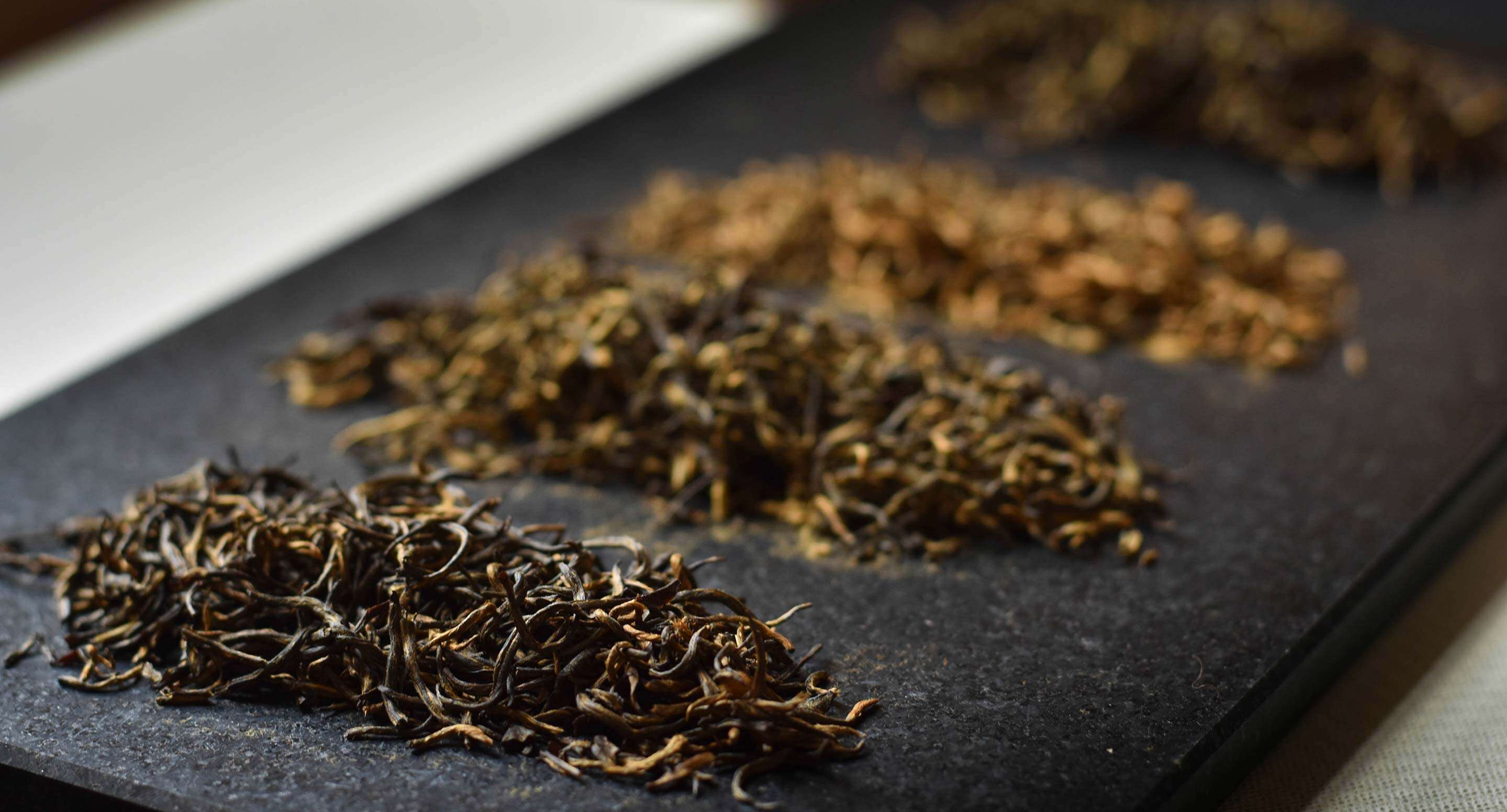
Budset Wuyi Black Teas
Jin Jun Mei
Once you’ve explored the leaf-based black teas of Wuyishan, try Jin Jun Mei, a delicate tea made only with tiny buds whose lingering aftertaste and complex texture is actually beginning to make black tea as popular in China as it is in the west. The golden down on every hand-picked bud suspends in the brewed tea and gives the tea a thick mouthfeel and sweet steamed bun flavor to compliment the mineral undertones and light floral aromas. Jin Jun Mei buds are so small that it takes many thousands to make a single pound of finished tea. This tea is perfect for anyone who loves white tea, Dragonwell or any other texture-focused tasting experience. Budset teas are quieter and more subtle than leaf-harvest teas, but the quiet contemplative quality of a tea like Jin Jun Mei can be a beautiful way to explore the nuance of taste, texture and aroma.

Black Buds Jin Jun Mei
While the iconic golden color of Jin Jun Mei’s perfect buds have inspired a craze across China, our partner Li Xiangxi’s personal favorite is the Black Buds Jin Jun Mei. Because of the genetic variation of Xingcun Xiaozhong varietal, some plants yield buds with lots of down while others are more sleek and tender. The ones without as much down are black or silvery after processing instead of gold. Just as precious and difficult to pick, the final flavor profile tends to have juicy grape notes and more aromatics that balance out the mineral texture. This tea is a perfect introduction to the intense sweetness of budset teas while still maintaining the vibrant flavor and aroma of a leaf-harvest black tea – the best of both worlds!

Mei Zhan Jin
This unique tea is made with the huge buds of the unique Mei Zhan varieties tea plants. Mei Zhan plantings are generally used for making oolong, but the downy spring buds are unsuitable for oolong processing. Our partner Mr Li. discovered that the buds make for an incredibly rich and evocative black tea when traditionally hand-finished like Jin Jun Mei. Juicy lychee and nectarine notes combine with sweet rice savories and floral undertones for a truly unique flavor. Anyone who loves Mei Zhan Oolong, or who is looking for a more fruity flavor-forward budset tea experience will love Mei Zhan Jin.

Purple Buds Wuyi Black
Purple Buds Black Tea is actually a rare expression of the classic Xingcun Xiaozhong varietal. The buds on these tea plants are a light purple color before harvest. The unique and iconic flavor of Purple Buds is vaguely tropical with notes of pineapple and nutmeg, rich minerality and cinnamon sweetness. Because this tea requires very specific conditions and the buds can be hard to identify, our partner Mr. Li personally picks this tea and finishes it himself without help from his cousins so that he can control the full production. Only a dozen kilos were harvested in 2018. This is a wonderful tea to try when you want to explore the more tropical and aromatic side of sweet budset teas and see a new way that Xingcun Xiaozhong can express itself.
Tongmu Reserve Jin Jun Mei
While most tea plants in Tongmu are allowed to grow wild, our partner the Li Family has a grove of cultivated and trimmed Xingcun Xiaozhong varietal tea plants whose tiny buds are uniformly golden, twisted and smaller than classic Jin Jun Mei. These plants require many thousands of buds for a single pound of fresh tea, and it takes over five pounds of fresh tea to make a single pound of finished Jin Jun Mei. The unique weather conditions and meticulous harvesting yields a rich sweet potato flavor, bolstered by the texture of suspended bud down in every cup. The aromatic finish is full of big florals and a deep spiced undercurrent. This is a truly subtle and contemplative tea that shows the developing Chinese aesthetic ideal in black tea- light, texture-rich, intensely sweet, and full of lingering aromatic aftertaste.


So, where do you start?
The most important thing is to find a family or workshop whose teas you trust. Approach each tea with an open mind, ready to see what makes each one special and worth making.
A great way to learn about what you love in black teas is to try three samples back to back, take notes and compare. If you find yourself loving the rich sweet potato flavor and sweet aftertaste time after time, buddy teas like Jin Jun Mei are going to the most rewarding to explore next. If you are drawn to foresty woody cooling sensations, wild teas or semi-wild teas like Tongmu black teas or Old Tree Wuyi Gongfu Black might be best.
No matter what you enjoy, have fun and find what you love in every tea you try! After a few mindful tasting sessions you’ll start finding deeper and deeper appreciation of fine Wuyi black teas.


 How To
How To Myths & Legends
Myths & Legends Travelogue
Travelogue Tasting Journal
Tasting Journal Talking Shop
Talking Shop Tea 101
Tea 101 Watch
Watch Teaware
Teaware News
News






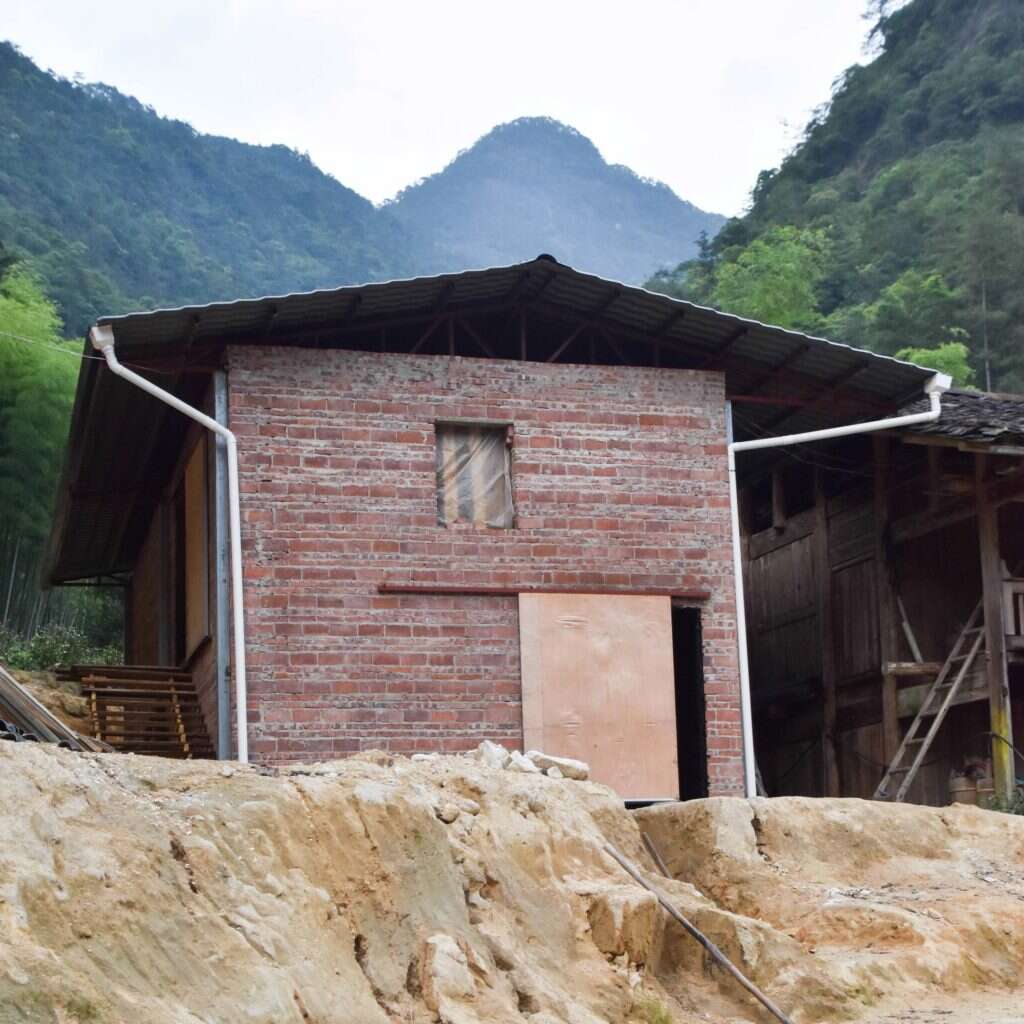




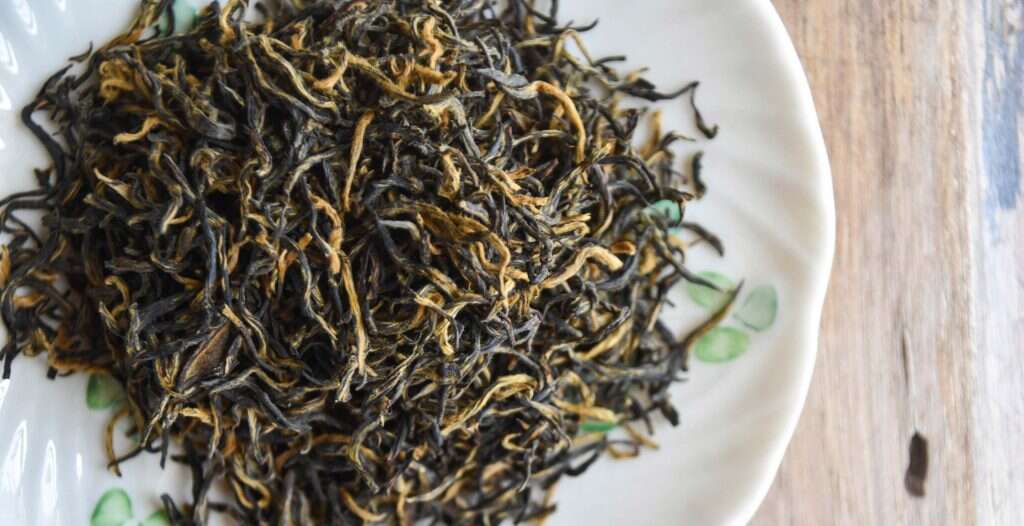

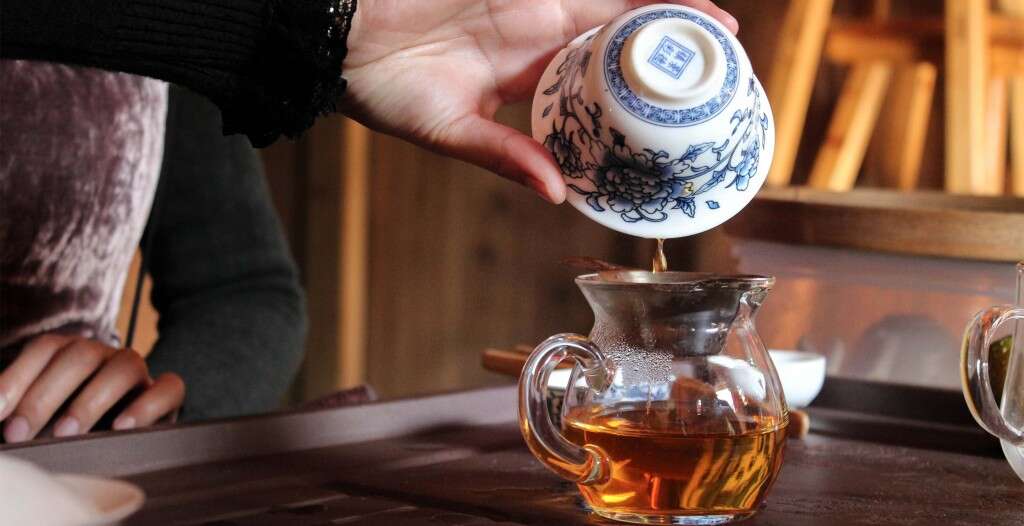





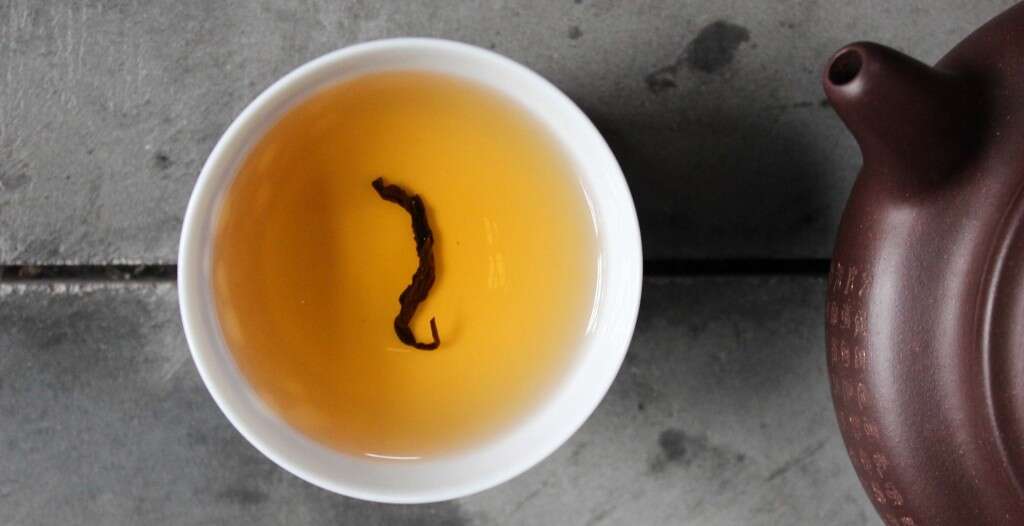










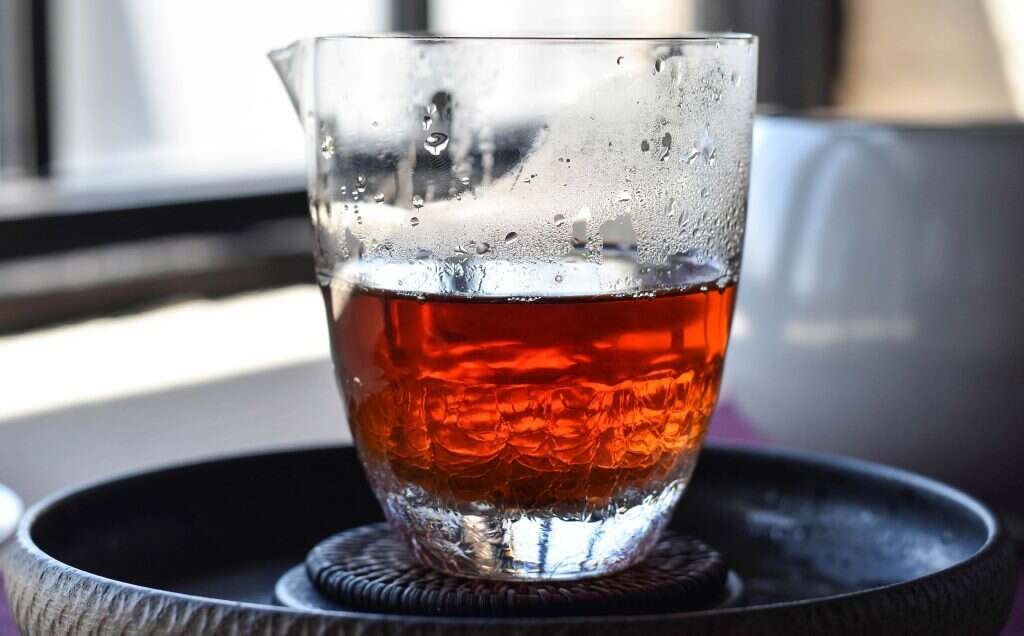

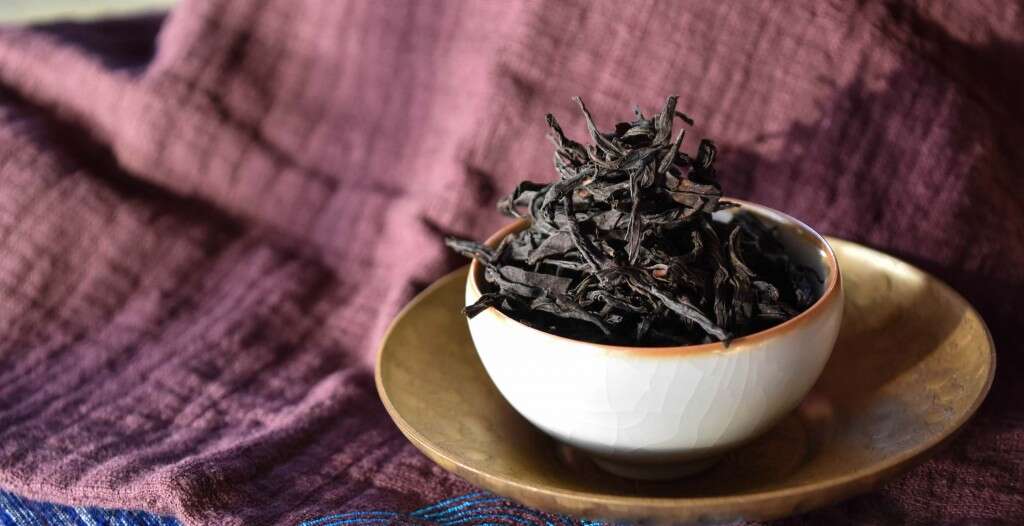


Leave a Reply